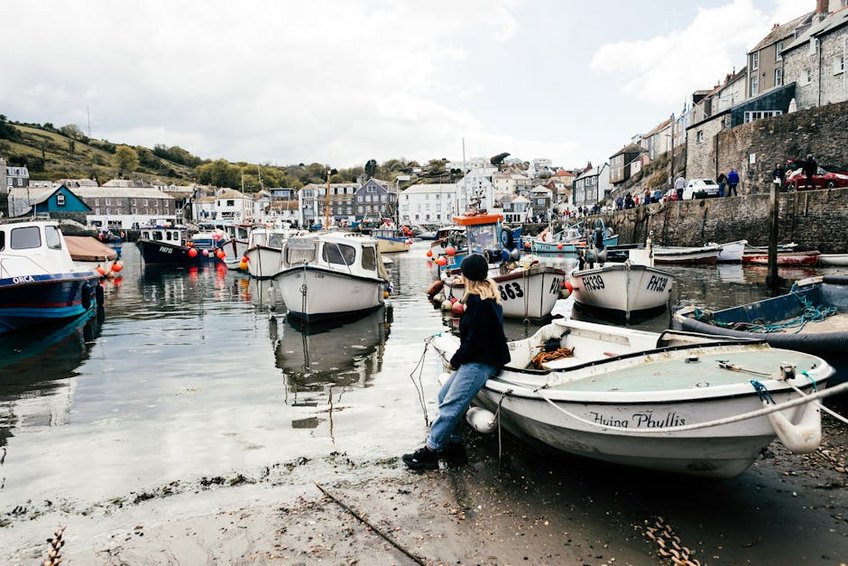Local Town Fairs: A Complete Guide to America’s Community Celebrations
Local town fairs represent the heart and soul of American community life, bringing together neighbors, families, and visitors for unforgettable celebrations of local culture, agriculture, and tradition. These vibrant events transform ordinary town squares and fairgrounds into bustling centers of entertainment, delicious food, and genuine human connection. Whether you’re seeking classic carnival rides, homemade pies, livestock exhibitions, or simply that warm sense of community belonging, local town fairs deliver authentic experiences that commercial theme parks simply cannot match. The magic of these gatherings lies in their ability to preserve traditions while creating new memories, making them perfect destinations for travelers looking to experience genuine American culture beyond typical tourist attractions. From the moment you smell that familiar combination of funnel cakes and hay bales, you’ll understand why generations of Americans cherish these annual celebrations as highlights of their community calendars.
Local Town Fairs Essential Information – What Every Visitor Should Know
Understanding the structure and purpose of local town fairs helps visitors appreciate these events on a deeper level. Most fairs operate as non-profit organizations run by volunteer committees who work year-round to coordinate everything from agricultural competitions to entertainment bookings. These events typically serve multiple purposes: celebrating local agriculture through livestock shows and crop exhibitions, providing family entertainment through rides and games, supporting local artisans and crafters, and raising funds for community projects through admission fees and concession sales. The average local town fair attracts between 5,000-15,000 visitors depending on the community size, with most events running 3-5 days during peak summer or early fall months. What makes these events special is their authenticity – you’re experiencing genuine local culture rather than manufactured entertainment.
Historical Background and Evolution
- Originated from medieval European market fairs, adapting to American agricultural communities in the 19th century
- Originally focused primarily on agricultural competitions and livestock auctions
- Modern fairs balance tradition with contemporary entertainment including concerts, demolition derbies, and extreme sports demonstrations
- Budget option ($25-40 per person): Basic admission, limited ride tickets, bringing your own water and snacks, focusing on free exhibits and entertainment
- Mid-range experience ($50-75 per person): Admission, unlimited ride wristband, sampling several food items, purchasing small souvenirs
- Premium experience ($100+ per person): VIP admission, premium food and beverage sampling, game participation, professional photos, souvenir merchandise
- International Association of Fairs and Expositions
- Successful Farming Magazine Fair Coverage
Key Components and Features
Every quality local town fair features several standard components that create the complete experience. The agricultural exhibits form the foundation, with farmers showcasing their best livestock, crops, and produce in competition for blue ribbons. The midway area offers classic carnival rides ranging from gentle Ferris wheels for children to thrilling spin rides for teenagers and adults. Food concessions serve everything from traditional fair foods like corn dogs and cotton candy to regional specialties that reflect local culinary traditions. Craft halls display everything from quilting and woodworking to photography and baked goods, while entertainment stages host local musicians, dance troupes, and sometimes bigger-name performers. Educational exhibits from local organizations round out the experience, making fairs both entertaining and informative.

Local Town Fairs Planning Your Visit – Timing, Budget, and Preparation
Strategic planning significantly enhances your local town fair experience, especially considering most events occur annually with limited dates. The United States hosts over 3,200 county and local fairs annually, primarily between June and October, with peak season occurring in August when agricultural harvests reach their peak. Scheduling your visit requires checking specific dates for your target region, as timing varies significantly based on climate and agricultural cycles. Northern states typically hold fairs in late summer through early fall, while southern states often schedule spring fairs to avoid extreme summer heat. Budget planning should account for admission fees, ride tickets, food expenses, and potential souvenir purchases. Smart visitors monitor weather forecasts closely since most fair activities occur outdoors and rain can significantly impact the experience.
Best Time to Visit Local Town Fairs
The ideal time to visit local town fairs depends entirely on your priorities and location. For perfect weather conditions, target late spring fairs in southern states (April-May) or early fall fairs in northern states (September-October) when temperatures are mild and rainfall is typically lower. If you want to experience agricultural competitions at their peak, August represents the prime month nationwide as harvest seasons converge. Weekend days offer the most activities and entertainment options but also attract the largest crowds, while weekdays provide more relaxed experiences with shorter lines for popular attractions. Evening hours often feature special events like concerts, fireworks, or night-time rodeos, creating a different atmosphere than daytime visits. Consider visiting on opening day for fresh exhibits and reduced crowds, or closing day for potential discounts on ride tickets and food.
Budget Planning and Costs
Essential Preparation Checklist
Proper preparation separates frustrating fair experiences from fantastic ones. Begin by checking the official fair website for specific schedules, parking information, and prohibited items (many fairs restrict outside food and beverages). Wear comfortable walking shoes as you’ll likely cover 2-5 miles exploring all exhibits and attractions. Dress in layers since temperatures can vary significantly between sunny midway areas and shaded exhibit halls. Bring cash despite increasing card acceptance, as many vendors still operate cash-only and ATMs often charge high fees. Pack sunscreen, hats, and reusable water bottles (empty bottles are usually permitted for refilling at water stations). Consider bringing a lightweight backpack for carrying purchases, and always have a meeting point established in case your group gets separated in crowded areas.
Local Town Fairs Top Attractions and Activities – Must-Experience Highlights
The diversity of attractions at local town fairs ensures there’s something for every age and interest, creating memorable experiences that keep families returning year after year. Agricultural exhibits form the educational heart of these events, allowing urban visitors to connect with rural traditions through livestock barns, crop competitions, and farming demonstrations. The midway area delivers classic amusement with rides ranging from gentle kiddie rides to thrilling attractions that test your stomach, plus skill games offering everything from stuffed animals to oversized novelty prizes. Food avenues present regional specialties alongside fair classics, with everything from deep-fried innovations to blue-ribbon baked goods. Entertainment stages feature continuous performances from local talent to nationally-known acts, while demonstration areas showcase everything from lumberjack competitions to cooking shows.
Must-See Highlights and Classic Experiences
No local town fair experience is complete without sampling these iconic attractions that define the American fair tradition. The livestock barns offer unforgettable encounters with prize-winning cattle, horses, pigs, sheep, and poultry, often with opportunities to interact with animals under supervision. The agricultural hall displays everything from giant pumpkins and perfect ears of corn to elaborate scarecrow displays and flower arrangements judged to perfection. The food midway demands tasting at least one classic fair food like funnel cakes, corn dogs, or cotton candy, plus one regional specialty specific to the area. The demolition derby or tractor pull provides thrilling entertainment for those who enjoy motorsports, while the craft building showcases incredible talent from local artisans in woodworking, quilting, canning, and other traditional skills. Finally, the Ferris wheel offers panoramic views of the entire fairgrounds, especially magical at night when lights transform the atmosphere.
Hidden Gems and Local Favorites
Beyond the main attractions, savvy fairgoers seek out these lesser-known experiences that often provide the most authentic local flavor. The junior exhibits building showcases incredible projects from 4-H and FFA youth members, from raised livestock to science projects, offering inspiring glimpses into the next generation of agricultural leaders. The heritage area frequently features historical reenactments, antique farm equipment demonstrations, and traditional crafters like blacksmiths and weavers practicing nearly-lost arts. The commercial building hosts local businesses and organizations offering everything from free samples to valuable information about community resources. The silent auction area allows visitors to bid on donated items with proceeds supporting fair operations or local charities. Finally, the picnic areas away from the main crowds provide perfect spots for people-watching and enjoying your food purchases in relative peace while still absorbing the fair atmosphere.
Local Town Fairs Practical Travel Information – Logistics and Accommodations
Navigating the practical aspects of attending local town fairs requires understanding the unique logistics of these temporary events. Most fairs occur at dedicated fairgrounds located on the outskirts of towns, designed specifically to handle large crowds and agricultural exhibits. Transportation options typically include onsite parking for $5-15 per vehicle, with many fairs offering free shuttle services from satellite parking areas to reduce congestion. Accommodation options range from camping at or near the fairgrounds to local hotels and bed & breakfasts, though these often book months in advance for popular fairs. Food and beverage policies vary significantly – some fairs allow outside food and sealed water bottles, while others prohibit all outside consumables to support their concession vendors. Accessibility has improved dramatically at most fairs, with wheelchair rentals, designated viewing areas, and special services for visitors with disabilities.
| Category | Options/Features | Price Range (USD) |
|---|---|---|
| Admission | General, Senior, Military discounts, Children under 5 free | $8-15 per person |
| Ride Tickets | Individual tickets, Unlimited wristbands, Family packages | $1-2 per ticket, $25-35 wristbands |
| Food Items | Classic fair foods, Regional specialties, Beverages | $5-12 per item |
| Games & Activities | Skill games, Midway attractions, Special exhibits | $3-10 per activity |
| Souvenirs | T-shirts, Hats, Local products, Craft items | $10-40 per item |


